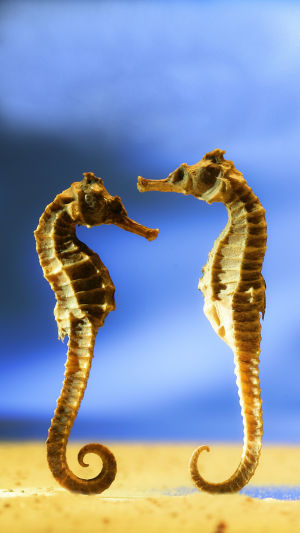Seahorses have the outline of a horse and are able to display special forms during swimming, such as elongated noses and camouflaged skin.
The flexible, curly tail makes seahorses an amazing sea creatures, capable of surviving in the obstacles of seagrass, mangroves, and coral reefs.
In the process of designing a continuum robot, the seahorse tail was selected as a model system for developing a robust continuum robot due to its flexibility, agility, and adaptability to the conformal grasping of various structural objects.
According to reports, the researchers first built a continuous robot configuration consisting of 10 units with the same cross-section based on the tensegrity structure.
For this configuration, when ropes 1 and 2 are retracted, and the ropes 3 and 4 are released, the robot can bend around the X axis in the YOZ plane, from the initial straight state to the bent state, with a bending angle of 120.08°.
However, after testing, the robot can only exhibit approximately equal-curvature bending deformation, which may limit its adaptive grasping of objects with different curvatures.
To overcome this limitation, the team further developed a novel design paradigm inspired by the tapered tail of the seahorse, by adjusting the length of the longitudinal rod to make the robot exhibit a specific taper.
In order to verify the feasibility of this idea, the researchers set up 5 groups of continuous robot configurations with different tapers (0.01, 0.02, ..., 0.05), followed by theoretical bending motion analysis, and obtained the following theoretical research results: In the same under the driving criterion, continuous robots with different tapers can exhibit completely different bending configurations.
In addition, it is considered that the length of the driving rope may also be an important factor affecting the deformation characteristics of the continuum robot. The team also assessed the specific effect of the length of the tether on the curvature of the robot.
In order to test the conformability of the robot to the object, the researchers also calculated the bending curvature of each unit and mapped the corresponding results on this basis.
The results show that this driving mode with physical intelligence can enhance the adaptability of continuous robots to objects with variable curvature and overcome the obstacle of curvature mismatch during grasping.
To further analyze the robot's interaction with the foam balls, the team measured the curvature of each cell of the robot and found that cells 4 through 10 had similar curvatures as expected.
This demonstrates that the actuation scheme enables the robot to achieve on-demand conformal grasping.
The test results of the bionic continuous robot picking up the floating objects in the water show that the robot can grasp the floating objects very well.
To evaluate the robot's grasping performance, the researchers compared the robot's deformed contour curvature with the object's contour curvature and found that the maximum error between the expected curvature and the robot's actual curvature was only 15.32%.
Such a good consistency indicates that the robot has the ability to interact with floating objects of known curvature, and may provide some inspiration for in-situ characterization techniques of floating object collection in the future.
The experiment also proves that the continuous robot has corresponding development value, mainly because: this technology can promote the development of various in-situ operations and characterization techniques for collecting floating pollutants, and contribute to the protection of the beauty of marine ecology.
In the future, the key research direction of this research work is to equip the design with flexible sensors to achieve a firm grasp of objects by monitoring the grasping force in real-time.





